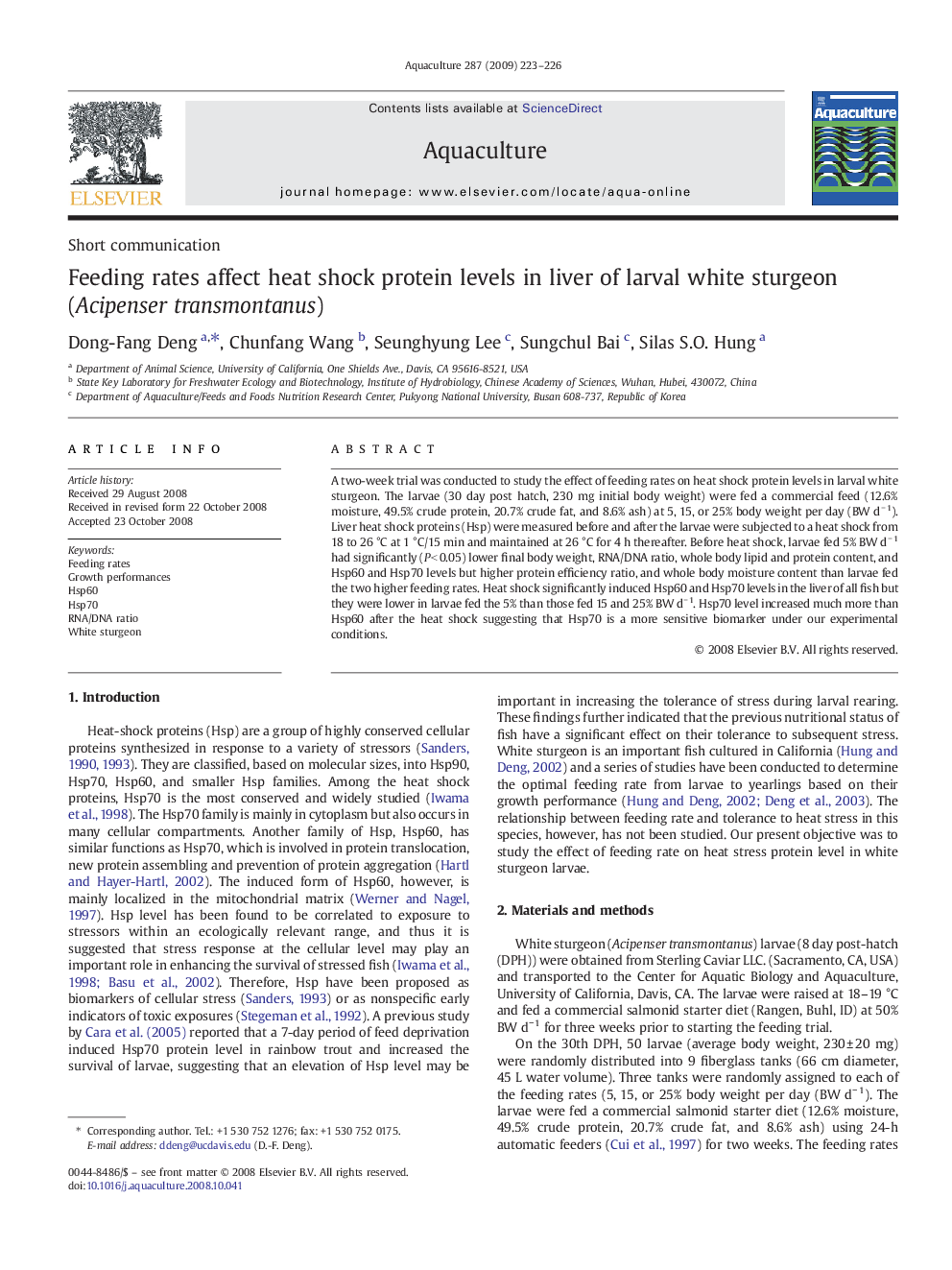| Article ID | Journal | Published Year | Pages | File Type |
|---|---|---|---|---|
| 2424247 | Aquaculture | 2009 | 4 Pages |
A two-week trial was conducted to study the effect of feeding rates on heat shock protein levels in larval white sturgeon. The larvae (30 day post hatch, 230 mg initial body weight) were fed a commercial feed (12.6% moisture, 49.5% crude protein, 20.7% crude fat, and 8.6% ash) at 5, 15, or 25% body weight per day (BW d− 1). Liver heat shock proteins (Hsp) were measured before and after the larvae were subjected to a heat shock from 18 to 26 °C at 1 °C/15 min and maintained at 26 °C for 4 h thereafter. Before heat shock, larvae fed 5% BW d− 1 had significantly (P < 0.05) lower final body weight, RNA/DNA ratio, whole body lipid and protein content, and Hsp60 and Hsp70 levels but higher protein efficiency ratio, and whole body moisture content than larvae fed the two higher feeding rates. Heat shock significantly induced Hsp60 and Hsp70 levels in the liver of all fish but they were lower in larvae fed the 5% than those fed 15 and 25% BW d− 1. Hsp70 level increased much more than Hsp60 after the heat shock suggesting that Hsp70 is a more sensitive biomarker under our experimental conditions.
